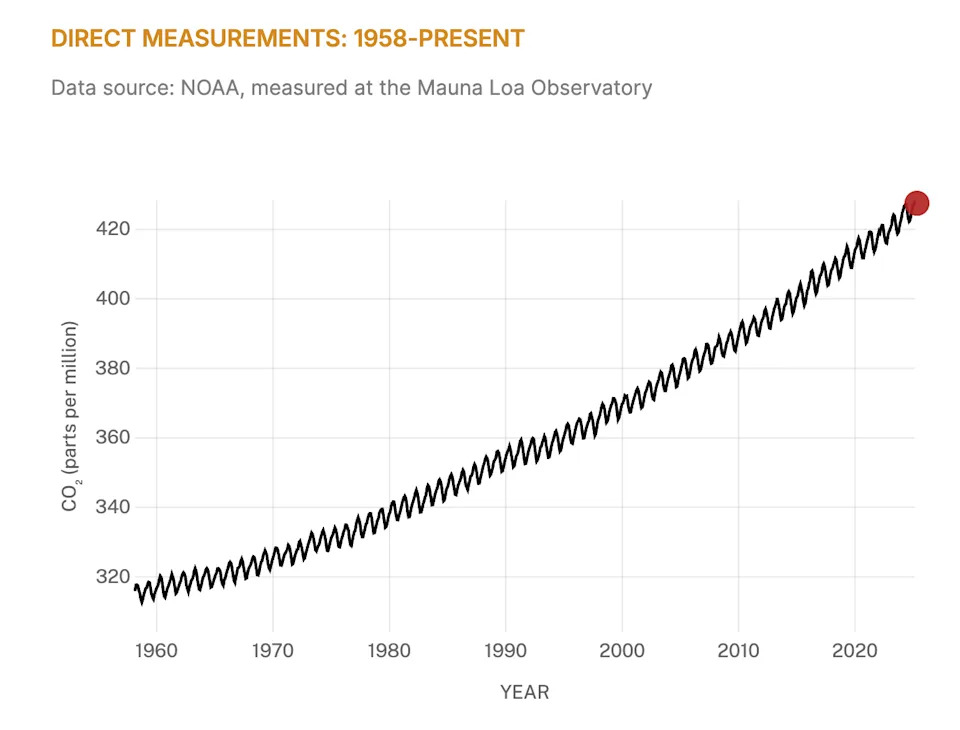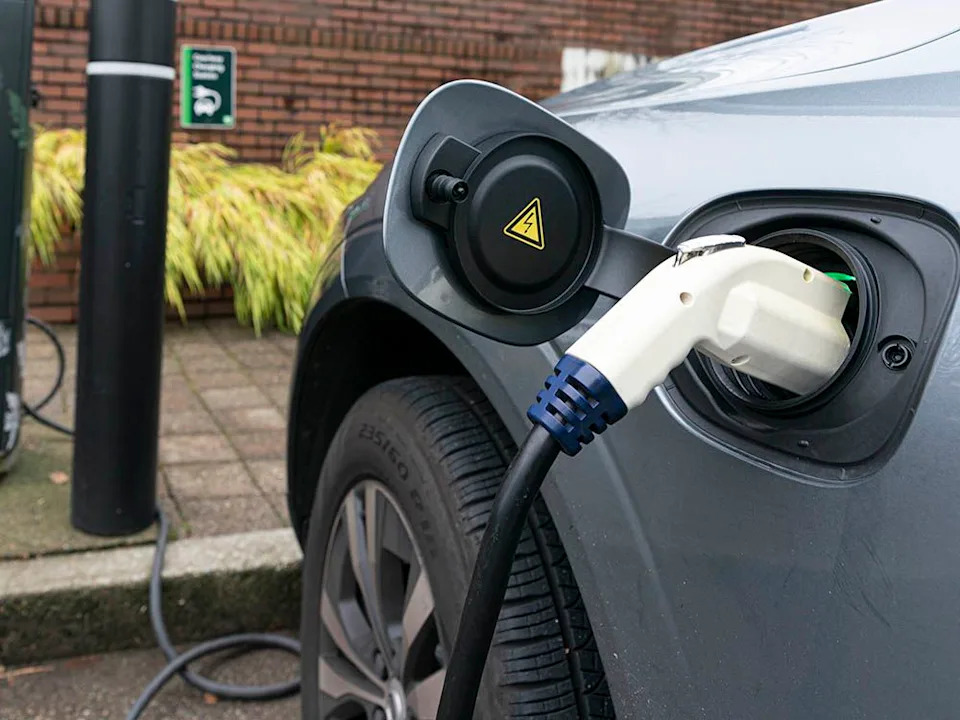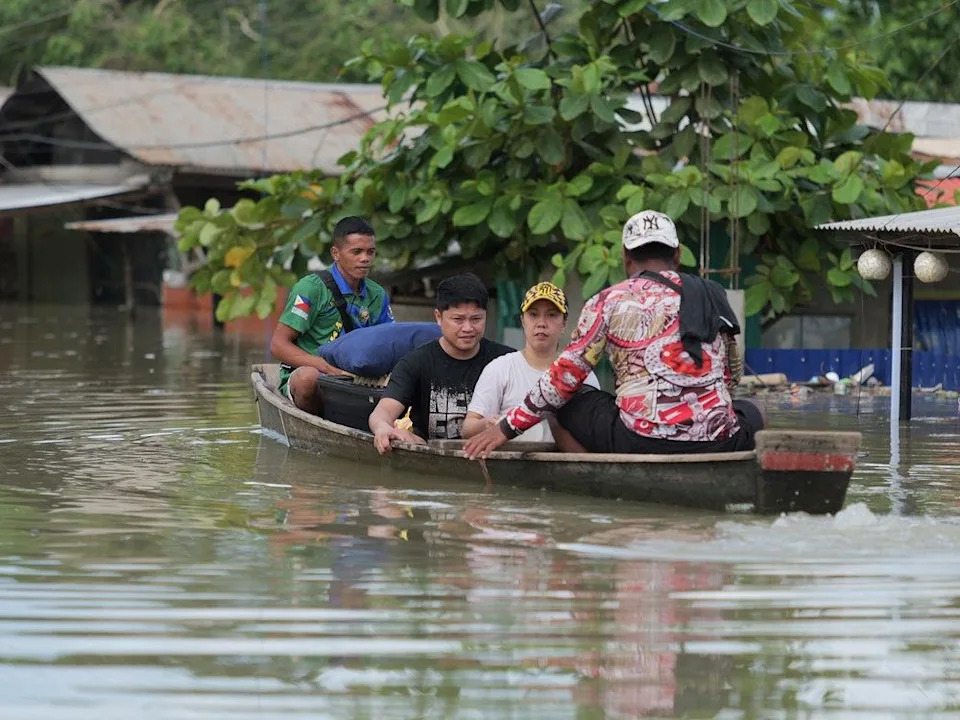Here’s the latest news concerning climate change and biodiversity loss in B.C. and around the world, from the steps leaders are taking to address the problems, to all the up-to-date science.
Check back every Saturday for more climate and environmental news or sign up for our Sunrise newsletter HERE.
In climate news this week:
• LNG expansion could bring 200 more tankers a year to B.C.’s West Coast, report says
• Lack of Metro Vancouver charging stations hampers electric vehicle uptake: Report
• The scientists who popularized carbon capture have a warning about it
• Oil and gas lobbyists outnumber delegates at COP30 in Brazil
Human activities like burning fossil fuels and farming livestock are the main drivers of climate change, according to the UN’s intergovernmental panel on climate change. This causes heat-trapping greenhouse gas levels in Earth’s atmosphere, increasing the planet’s surface temperature.
The panel, which is made up of scientists from around the world, including researchers from B.C., has warned for decades that wildfires and severe weather, such as the province’s deadly heat dome and catastrophic flooding in 2021, would become more frequent and intense because of the climate emergency. It has issued a code red for humanity and warns the window to limit warming to 1.5 C above pre-industrial times is closing.
According to NASA climate scientists, human activities have raised the atmosphere’s carbon dioxide content by 50 per cent in less than 200 years, and “there is unequivocal evidence that Earth is warming at an unprecedented rate.”
As of Nov. 13, carbon dioxide in the atmosphere was 424.87 parts per million, down slightly from 425.48 ppm last month, according to the latest available data from the NOAA measured at the Mauna Loa Observatory, a global atmosphere monitoring lab in Hawaii. The NOAA notes there has been a steady rise in CO2 from under 320 ppm in 1960.

Carbon dioxide in the atmosphere warms the planet, causing climate change. Human activities have raised the atmosphere’s carbon dioxide content by 50% in less than 200 years, according to NASA.
Climate change quick facts:
• The Earth is now about 1.3 C warmer than it was in the 1800s.
• 2024 was hottest year on record globally, beating the record in 2023.
• The global average temperature in 2023 reached 1.48 C higher than the pre-industrial average, according to the EU’s Copernicus Climate Change Service. In 2024, it breached the 1.5 C threshold at 1.55 C.
• The past 10 years (2015-2024) are the 10 warmest on record.
• Human activities have raised atmospheric concentrations of CO2 by nearly 49 per cent above pre-industrial levels starting in 1850.
• The world is not on track to meet the Paris Agreement target to keep global temperature from exceeding 1.5 C above pre-industrial levels, the upper limit to avoid the worst fallout from climate change including sea level rise, and more intense drought, heat waves and wildfires.
• On the current path of carbon dioxide emissions, the temperature could increase by as much 3.6 C this century, according to the IPCC.
• In June 2025, global concentrations of carbon dioxide exceeded 430 parts per million, a record high.
• Emissions must drop 7.6 per cent per year from 2020 to 2030 to keep temperatures from exceeding 1.5 C and 2.7 per cent per year to stay below 2 C.
• There is global scientific consensus that the climate is warming and that humans are the cause.
(Sources for quick facts: United Nations IPCC, World Meteorological Organization, UNEP, NASA, climatedata.ca)

Source: NASA
Latest NewsLNG expansion could bring 200 more tankers a year to B.C.’s West Coast, report says
The expansion of liquefied natural gas production in B.C. could add 200 LNG tankers a year over the coming decade, increasing the risk of pollution to already busy shipping lanes in the Georgia and Juan de Fuca straits, according to a recent report from an environmental think-tank.
Plans for two gas plants — an expansion of Tilbury LNG in Delta and construction of Woodfibre LNG near Squamish — would increase LNG production capacity from less than 100,000 tonnes a year in 2015 to nearly six million tonnes by 2035, according to the report from Maritime Beyond Methane, a network of advocacy groups and non-government groups working to reduce methane emissions in the shipping industry.
“We’re seeing a 60-fold expansion planned from just these two projects,” said ocean and climate consultant Curtis Kunitz-Martin, who wrote the report. “We’re seeing this in one region. What does that also mean for the projects in Northern B.C.?”
The increase in tanker traffic comes as B.C. seeks to expand LNG exports. A Conference Board of Canada study in 2020 estimated that the industry could create roughly 71,000 jobs annually in B.C. By 2064, the conference board estimated over $200 billion in wages could flow to B.C. from LNG development, with tax and royalty payments of roughly $2 billion per year.
But Kunitz-Martin said the increase in LNG tanker traffic increases the risks to public health and the marine ecosystem.
Methane gas escapes storage containers during transit and from ship engines during transit. Escaped methane reacts with other chemicals to create ground level ozone, a dangerous air pollutant, especially for people with respiratory problems.
—Nathan Griffiths

Prime Minister Mark Carney.
PM adds Ksi Lisims LNG and North Coast power line to major projects list
Ottawa has stepped in to help get a B.C. LNG plant and a major power line over the finishing line even as the plant battles persistent Indigenous opposition and the power line faces cost increases and concerns about availability of electricity.
Prime Minister Mark Carney announced in Terrace on Thursday that Ksi Lisims, a floating LNG export facility proposed for Pearse Island north of Prince Rupert, and the North Coast hydro transmission line, which will run from Prince George to Terrace to feed natural resource projects — will be referred to the Major Projects Office as part of his government’s next tranche of nationally significant infrastructure.
He said it would help streamline permitting and provide investor confidence, but in most cases it does not involve federal financial support.
The developments have been touted by Premier David Eby as part of B.C.’s efforts to make this province the “economic engine” of Canada, along with a dozen critical-mineral mines. They join LNG Canada’s proposed Phase 2 in Kitimat and the Red Chris copper-gold mine expansion on Carney’s list of major projects in B.C.
The Gitanyow First Nation has launched legal proceedings against the pipeline, with hereditary chief Simogyet Watakhayetsxw, also known as Deborah Good, saying Thursday “it is facing lawsuits in every direction” and “has no consent from the nations surrounding it.”
Nichole Dusyk, senior policy adviser for the International Institute for Sustainable Development, said doubling down on LNG makes no sense given the environmental ramifications and the fact the international market has a glut of natural gas.
—Alec Lazenby
Another dead humpback washes ashore
A humpback whale has washed ashore in the Strait of Georgia near Lasqueti Island.
The whale was discovered on Friday and identified as a mature male known as Polyphemus BCZ0324 by the Canadian Pacific Humpback Collaboration, which tracks the population using photos of unique fluke markings.
The cause of death isn’t immediately known. The federal fisheries department is expected to do a necropsy on the animal, said the Port McNeill-based Marine Education and Research Society. “This is an unfortunate incident, and we are working to better understand what happened,” the department said in a statement earlier this week.
The 21-year-old humpback was first documented in B.C. waters in 2004 and was known to migrate to Hawaii and spend its summer and autumn feeding in the Salish Sea.
It’s the second dead humpback found in the past two weeks in the Salish Sea. In late October, a four-year-old humpback known as Whisp was found dead near Keats Island near Vancouver.
—Victoria Times Colonist

An electric vehicle at a charging station in a file photo.
Lack of Metro Vancouver charging stations hampers electric vehicle uptake: Report
If you live in one of Metro Vancouver’s many condo towers or apartment buildings, there’s a pretty good chance you don’t own an electric vehicle.
That might be because of limited home charging options for condos and apartments, according to a recent report for Metro Vancouver.
Half of survey respondents said they weren’t happy with the electric vehicle charging experience in their building, according to the report. That’s compared with just three per cent of single family homeowners who were unhappy with their EV charging experience.
“Charging convenience is the most important consideration” for EV buyers, according to Werner Antweiler, associate professor at the Sauder School of Business at the University of B.C.
The limitations of home charging options in strata and large rental buildings are a major barrier to EV adoption, according to the report. Forty-three per cent of people in Metro live in condo or apartment towers and that number is expected to reach 50 per cent by 2051.
—Nathan Griffiths
Climate protests held at COP30 in Brazil
Beginning at dawn on Friday, dozens of people from Brazil’s Indigenous Munduruku tribe assembled at the venue of the United Nations’ COP30 climate summit in the city of Belém and blocked the entrance. They demanded a meeting with President Luiz Inácio Lula da Silva, denounced illegal gold mining and questioned infrastructure for transporting soybeans being built near their territory, in the Tapajós River basin of the Amazon region.
“Enough of using our image to claim sustainability and bio-economy while they destroy our forest,” said Alessandra Korap, a Munduruku leader who won the Goldman Environmental Prize in 2023.
COP30 President André Corrêa do Lago and CEO Ana Toni met with the protesters and negotiated the reopening of the entrance on Friday morning. “The reason for having a COP in the Amazon is for us to listen to the very people that are most vulnerable,” Toni said afterwards. “We are listening to their voice.”
The next day, a large crowd marched through the streets of Belém, demanding more participation in the closed-door COP30 discussions. As talks go into a second week, several key issues still need to be resolved, the most contentious being the delivery of a road map to transition away from fossil fuels.
—Bloomberg News
The scientists who popularized carbon capture have a warning about it
Back in 2001, Kenneth Möllersten and Michael Obersteiner came up with a novel idea that transformed the math of carbon emissions — and the world’s path to net zero.
At the time, oil and gas companies were dabbling with capturing carbon from fossil fuels, a process that cut emissions from producing energy to nearly zero. By burning plants instead, the two researchers figured, the industry could generate energy with negative emissions: Those trapped in trees or other biofuels, minus those captured from burning them.
The concept helped pave the way for the world to adopt negative emissions as a central part of climate planning — it’s become a key element of official emissions-reduction plans submitted to the United Nations by major economies including the UK, Brazil and Australia.
Ahead of COP30 in Belém, Brazil this week, most countries that filed emissions plans with net zero goals are relying on carbon removals to reach their target, according to analysis by the Climate Action Tracker, a partnership of climate researchers.
But Möllersten and Obersteiner are far from thrilled. The problem, they say, is that carbon capture was meant to cancel out past emissions. Instead, it’s bred an overconfidence that the strategy can substitute any hard-to-make cuts to fossil fuels.
Many countries, for example, are simply planning to overshoot their goals or haven’t bothered to spell out how they will reach them. Around 60 countries have updated their climate plans since the world agreed to transition away from fossil fuels at COP two years ago, but none of them included targets to cut oil and gas production. Some 20% of pledged emissions cuts, meanwhile, are unaccounted for in countries’ climate plans, the Climate Action Tracker group said. The assumption, it added, is that a lot of that will be captured.
—Bloomberg News
Newsom rebukes absent Trump at UN climate talks in Brazil
California Governor Gavin Newsom swept into the COP30 climate summit in Brazil with all the fanfare of a head of state.
He met with foreign ministers, huddled with the governor of the state of Pará, Brazil, and signed a declaration for deepened collaboration with Germany’s Baden-Württemberg.
And everywhere Newsom went inside the packed conference venue near the mouth of the Amazon River, he was mobbed by delegates and activists eager for a glimpse of the Democratic governor who’s effectively become the highest-ranking US emissary at the international climate talks.
“The United States of America is as dumb as we want to be on this topic, but the state of California is not,” Newsom told delegates. “And so we are going to assert ourselves, and we are going to lean in, and we are going to compete in this space.”
Newsom and other state and local officials came to the climate summit with a message of continued US commitment to battling climate change, even as President Donald Trump retreats from the fight. Trump, who has derided climate change as a “hoax,” is shunning the United Nations talks and so far hasn’t dispatched even low-level US government officials to the negotiations.
—Bloomberg News

Residents on a wooden boat evacuate from their flooded home at a village in Tuguegarao City, Cagayan province, north of Manila on November 11, 2025, as flood waters continue to inundate homes due to heavy rains brought about by Super Typhoon Fung-wong. Getty photo.
Fossil fuel lobbyists outnumber delegates at COP30 in Brazil
New analysis reveals more than 1600 fossil fuel lobbyists were granted access to the COP30 climate talks in Brazil, according to the Kick Big Polluters Out coalition.
The analysis reveals that fossil fuel lobbyists significantly outnumber almost every country delegation at COP30 – with only host country Brazil sending more people.
The coalition says this is a 12 per cent increase in lobbyists from last year’s climate talks in Baku, Azerbaijan, and is the largest concentration of fossil fuel lobbyists at COP since the coalition started analyzing conference attendees.
“With one in every 25 participants in Belém representing the fossil fuel industry, the calls for an accountability framework to protect the talks from big polluters grow stronger,” the coalition said in a statement.
“It’s common sense that you cannot solve a problem by giving power to those who caused it. Yet three decades and 30 COPs later, more than 1,500 fossil fuel lobbyists are roaming the climate talks as if they belong here,” said Jax Bongon, a member of the coalition and resident of the Phillippines, which was just devastated by a climate-driven super typhoon.
“It is infuriating to watch their influence deepen year after year, making a mockery of the process and of the communities suffering its consequences.”
—Tiffany Crawford
Related
